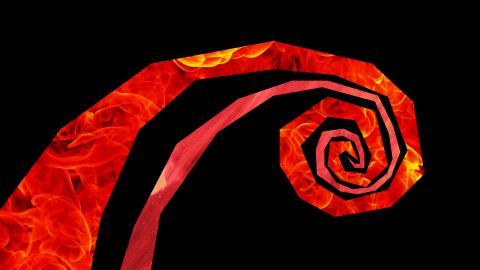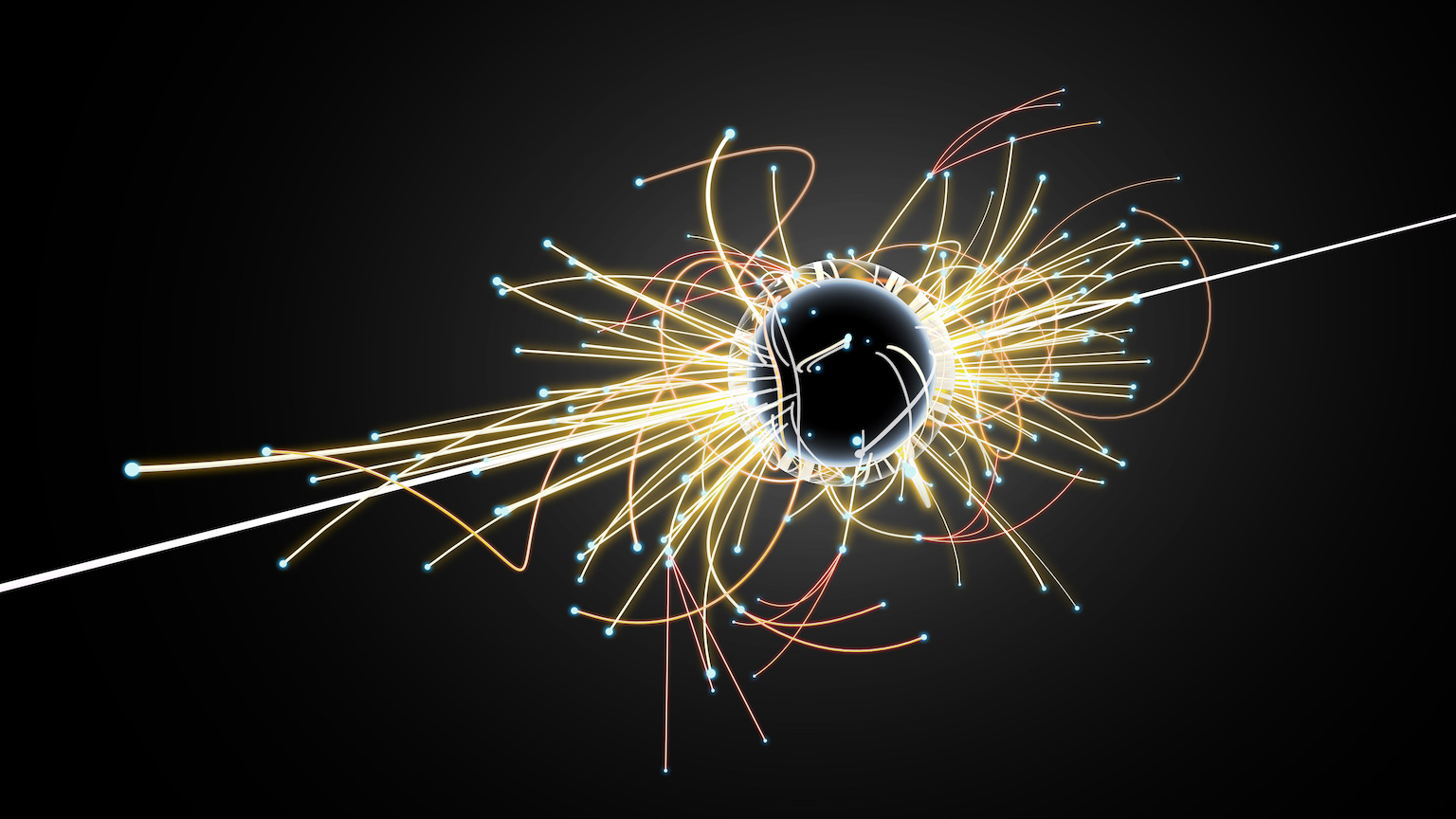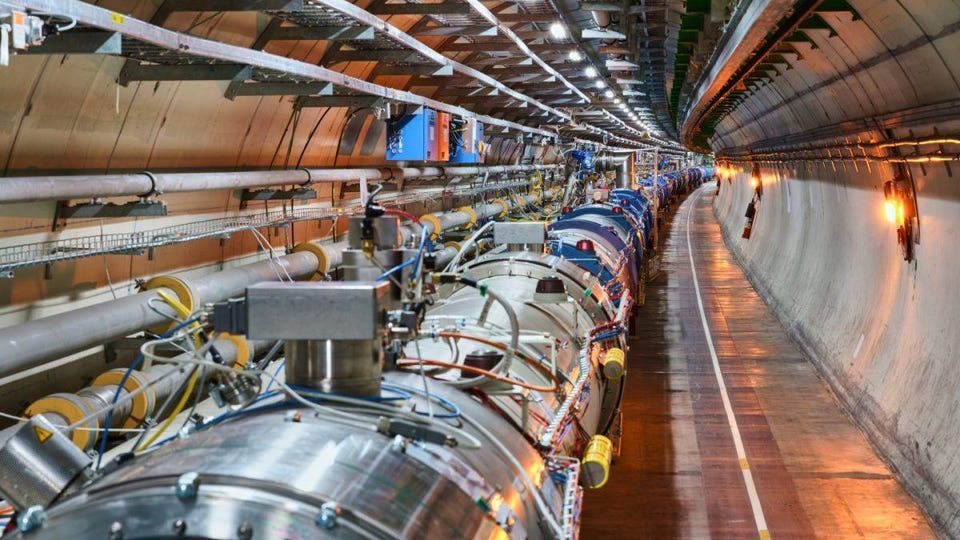Creating temperatures hotter than the Sun’s core to uncover superfluid secrets

- Scientists at the Relativistic Heavy Ion Collider (RHIC) in New York have generated temperatures of 4 trillion degrees Celsius using a particle accelerator.
- This temperature is at least 10 times hotter than the center of a supernova and about 250,000 times hotter than the center of the Sun.
- These extreme temperatures can produce quark-gluon plasmas, and new improvements to the system could help scientists learn more about these plasmas.
When you heat things, you can expect familiar effects. Heat ice and it melts. Heat water and it turns to steam. These processes occur at different temperatures for different materials, but the pattern repeats itself: solid becomes liquid and then gas. At high enough temperatures, however, the familiar pattern breaks. At super-high temperatures, a different type of liquid is formed.
This surprising result is because solid, liquid, and gas are not the only states of matter known to modern science. If you heat a gas – steam, for example – to very high temperatures, unfamiliar things happen. At a certain temperature, the steam becomes so hot that the water molecules no longer hold together. What once was water molecules with two hydrogen atoms and one oxygen atom (the familiar H2O) becomes unfamiliar. The molecules break apart into individual hydrogen and oxygen atoms. And, if you raise the temperature even higher, eventually the atom is no longer able to hold onto its electrons, and you are left with bare atomic nuclei marinated in a bath of energetic electrons. This is called plasma.
While water turns to steam at 100ºC (212ºF), it doesn’t turn to plasma until a temperature of about 10,000ºC (18,000ºF) — or at least twice as hot as the surface of the Sun. However, using a large particle accelerator called the Relativistic Heavy Ion Collider (or RHIC), scientists are able to collide together beams of bare gold nuclei (i.e., atoms of gold with all of the electrons stripped off). Using this technique, researchers can generate temperatures at a staggering value of about 4 trillion degrees Celsius, or about 250,000 times hotter than the center of the Sun.
At this temperature, not only are the atomic nuclei broken apart into individual protons and neutrons, the protons and neutrons literally melt, allowing the building blocks of protons and neutrons to intermix freely. This form of matter is called a “quark-gluon plasma,” named for the constituents of protons and neutrons.
Temperatures this hot are not typically found in nature. After all, 4 trillion degrees is at least 10 times hotter than the center of a supernova, which is the explosion of a star that is so powerful that it can be seen billions of light years away. The last time temperatures this hot existed commonly in the universe was a scant millionth of a second after it began (10-6 s). In a very real sense, these accelerators can recreate tiny versions of the Big Bang.
Generating quark-gluon plasmas
The bizarre thing about quark-gluon plasmas isn’t that they exist, but rather how they behave. Our intuition that we’ve developed from our experience with more human-scale temperatures is that the hotter something gets, the more it should act like a gas. Thus, it is completely reasonable to expect a quark-gluon plasma to be some sort of “super gas,” or something; but that’s not true.
In 2005, researchers using the RHIC accelerator found that a quark-gluon plasma isn’t a gas, but rather a “superfluid,” which means that it is a liquid without viscosity. Viscosity is a measure of how hard a liquid is to stir. Honey, for example, has a high viscosity.
In contrast, quark-gluon plasmas have no viscosity. Once stirred, they continue moving forever. This was a tremendously unexpected outcome and caused great excitement in the scientific community. It also changed our understanding of what the very first moments of the universe were like.
The RHIC facility is located at the Brookhaven National Laboratory, a U.S. Department of Energy Office of Science laboratory, operated by Brookhaven Science Associates. It is located on Long Island, in New York. While the accelerator began operations in 2000, it has undergone upgrades and is expected to resume operations this spring at higher collision energy and with more collisions per second. In addition to improvements to the accelerator itself, the two experiments used to record data generated by these collisions have been significantly improved to accommodate the more challenging operating conditions.
The RHIC accelerator has also collided together other atomic nuclei, so as to better understand the conditions under which quark-gluon plasmas can be generated and how they behave.
RHIC is not the only collider in the world able to slam together atomic nuclei. The Large Hadron Collider (or LHC), located at the CERN laboratory in Europe, has a similar capability and operates at even higher energy than RHIC. For about one month per year, the LHC collides nuclei of lead atoms together. The LHC has been operating since 2011 and quark-gluon plasmas have been observed there as well.
While the LHC is able to generate even higher temperatures than RHIC (about double), the two facilities are complementary. The RHIC facility generates temperatures near the transition into quark-gluon plasmas, while the LHC probes the plasma farther away from the transition. Together, the two facilities can better explore the properties of quark-gluon plasma better than either could do independently.
With the improved operational capabilities of the RHIC accelerator and the anticipated lead collision data at the LHC in the fall, 2023 is an exciting time for the study of quark-gluon plasmas.





